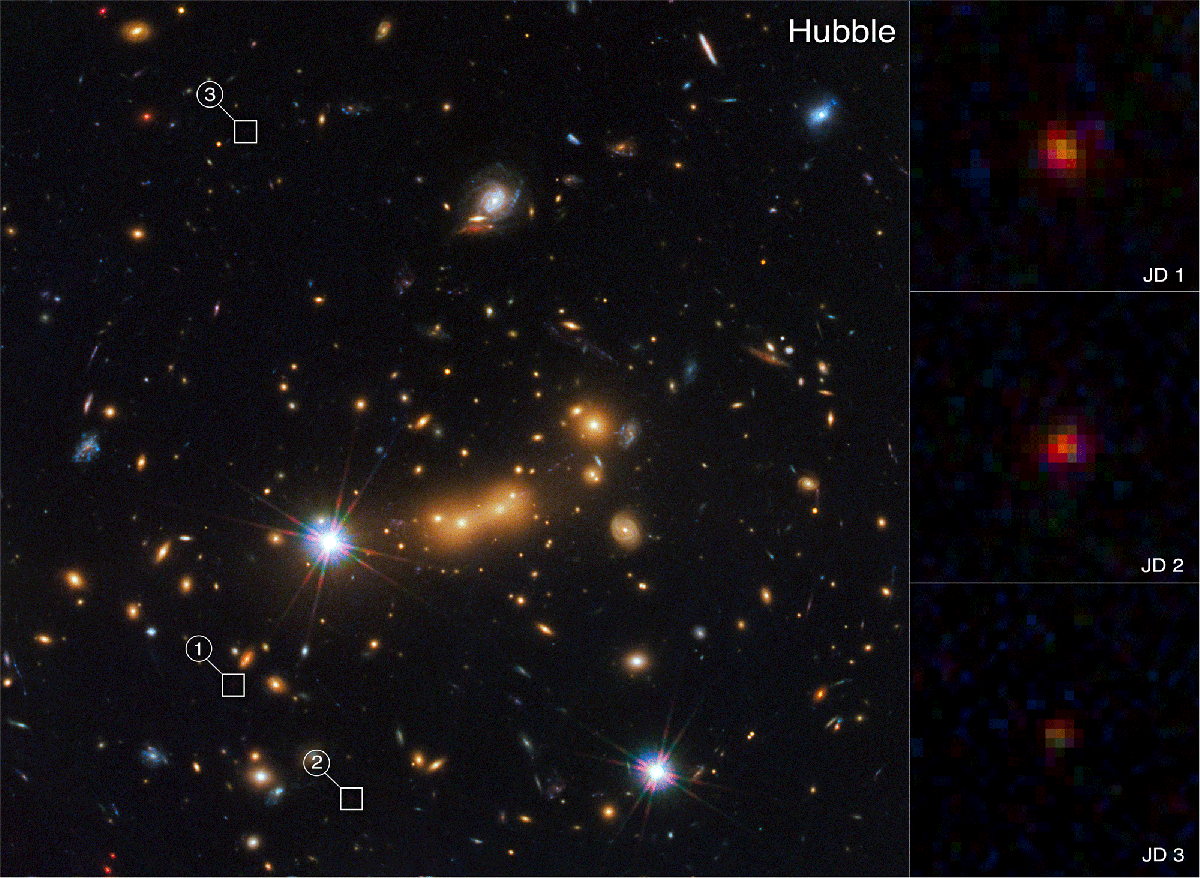Astronomers have announced a great unique discovery thanks to the James Webb Space Telescope, a finding that comes from “the very primitive universe”.
The space observatory has revealed that a distant known galaxy is not a single object but two. The object is known as MACS550-JD, and the light we can see today has been traveling from 400 million years after the Big Bang.
MACS0647 is a massive galaxy cluster. It is so large that it warps space-time, creating a gravitational lens. Objects located behind the cluster are magnified, so astronomers have been using it to see further back into the universe. This is how they discovered MACS0647-JD with Hubble ten years ago, where it appeared as a single red object.
“Due to the gravitational lensing of the massive cluster of galaxies MACS0647, is reflected in three images: JD1, JD2 and JD3. They are magnified by factors of eight, five, and two, respectively,” said discoverer Dan Coe, of Johns Hopkins University and the European Space Agency, in a NASA blog post.
